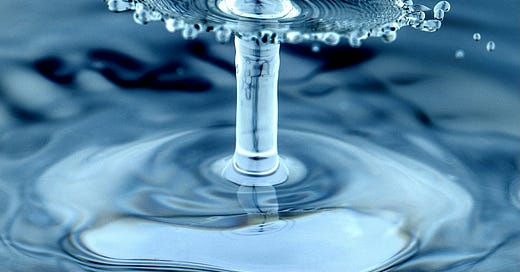It’s only in reflection that we can begin to make sense of things—the way we lived, the events that shaped us, and the meaning behind our perceptions and memories. Sometimes, these memories shield us; other times, they hurt more than they help.
Life is an ever-moving experience. It challenges us to adapt, grow, and learn from our mistakes if we want to thrive.
A lot has happened in forty years. The world has transformed over the last decade, and 2025 is unfolding before our eyes. If we dare to look deeply, we see a struggle for power—not just to make a mark, but to reshape the world order itself.
After graduating high school, I took a communications class where I tried to demonstrate that everything is connected—that the world could be seen infinitely, like a planetary system. Using straws and styrofoam balls, I built a model that, in hindsight, made little sense to anyone, including myself. The idea was simple: everything is energy, and we do not stand alone as individuals but as a collection of human beings with the intelligence to choose, create, and empathize with each other. Though I didn’t realize it then, I was pointing toward quantum science.
I failed that project because I couldn’t convey the message clearly enough. I couldn’t connect the dots for others. Today, I recognize that same challenge in the way we consume news. We see scattered bits and pieces, yet we struggle to think independently enough to determine what is real and what is not.
We rely too much on misleading headlines and social media soundbites that push us toward easy conclusions when, in reality, the world is more complex. Understanding requires curiosity and effort.
Recently, I subscribed to MasterClass, a platform offering lectures and interviews from scholars, artists, and leaders. I did so because I craved deeper perspectives—ones not shaped by corporate news cycles or social media algorithms. Learning in an environment freer from bias and commercials is more liberating. It encourages curiosity and activates the parts of our brain that expand our compassion, empathy, and understanding of humanity. It reminds me that everything truly is connected.
At the core, we are all human. We have diverse backgrounds and experiences, but we are bound together by community. Firefighters don’t choose which fires to fight—they save lives. Nurses don’t care for patients based on zip codes—they serve out of compassion and commitment. Yet, while we fight culture wars and get caught up in divisive narratives, we overlook the bigger picture. Whether addressing climate change, artificial intelligence, or curing disease, our collective expertise is needed. We are an interconnected species with the potential for an extraordinary future—but only if we recognize our shared responsibility to achieve it.
Our goals require connection, not transaction.
I wonder: If we all took one step back while standing in a circle, could we gain a little more perspective? Could we see our neighbors more clearly and say, There you are, friend. How do you do? Life becomes clearer when we view our experiences alongside others—when we connect events, choices, hopes, and fears to form a broader understanding.
So, this is my commentary on a 1982 communications project that I’m still trying to complete today. I am a humanity activist focused on connecting people and bridging the gaps between ideas, data, and human experiences. My goal is simple: to help us see the bigger picture—together.
Photo by Linus Mimietz on Unsplash




